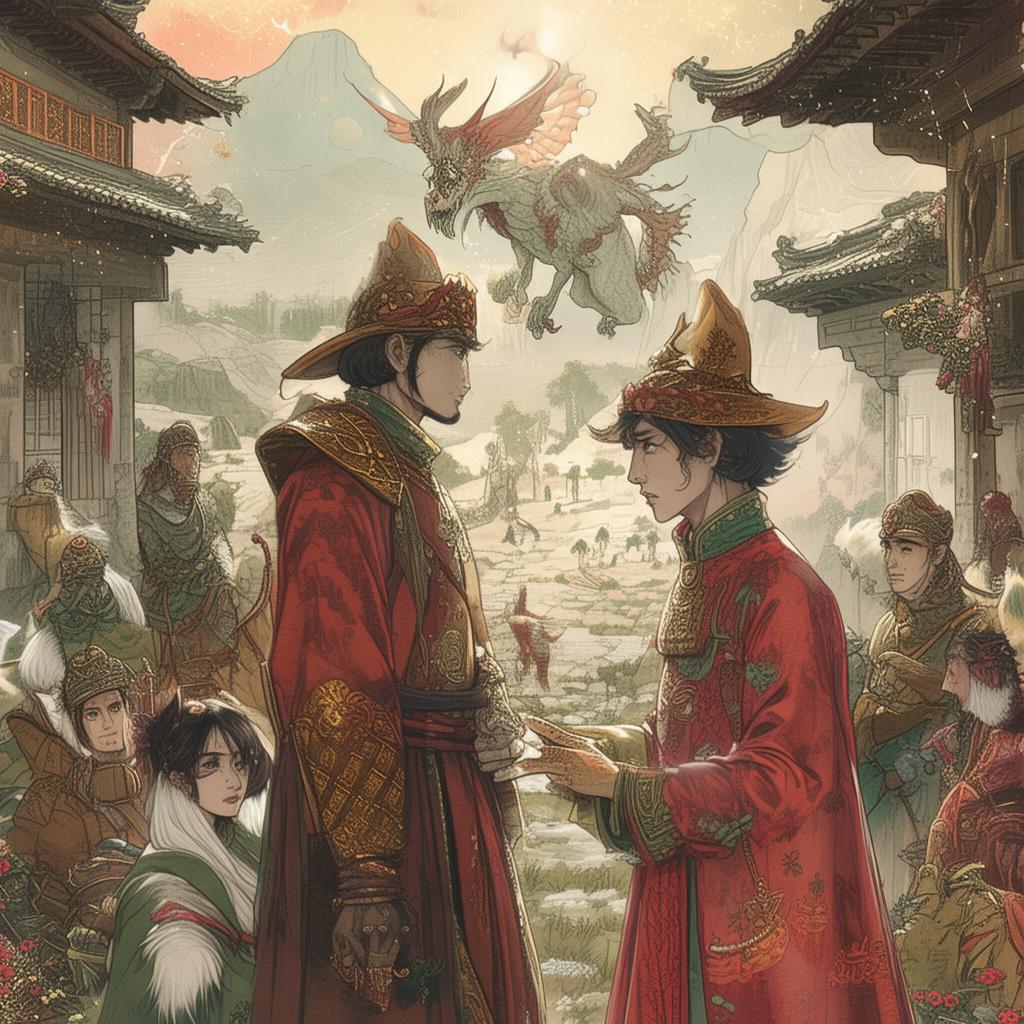Whispers of the Black Dahlia: A Parallel Reality's Dark Renaissance
The city of Los Angeles in the 1940s stood as a beacon of glitz and glamour, yet beneath the surface simmered a darkness that would forever change the lives of those who dared to delve into its secrets. In this parallel reality, the notorious murder of the "Black Dahlia" had never taken place, leaving the city's past untainted by the grim specter of a cold case. But for young artist Elara, the legend of the Black Dahlia was more than just a historical curiosity—it was a haunting presence that seemed to whisper through the alleyways and echo in the shadows.
Elara was a woman of contradictions. By day, she painted the city's vibrant life in her canvases, capturing the essence of its people and places. By night, she was drawn to the stories of the city's forgotten souls, her mind alight with the tales of the mysterious and the macabre. It was during one such nocturnal sojourn that she stumbled upon an old, dusty book in a forgotten bookstore on Sunset Strip. The book, titled "The Black Dahlia's Renaissance," was a historical drama set in a parallel reality, a place where the legend of the Black Dahlia had never been born.
Intrigued, Elara began to read, her heart racing with each word. The story spoke of a young woman named Isadora, an artist whose life was entwined with the legend of the Black Dahlia. Isadora's paintings were said to possess a haunting beauty, and it was rumored that they held the key to a hidden truth. As Elara's imagination ran wild, she found herself drawn into the parallel world, her dreams filled with visions of Isadora and the enigmatic city of this alternate reality.
One evening, as Elara walked the streets of her own Los Angeles, she felt a strange pull. The wind seemed to whisper her name, and she found herself at the very location where the murder of the Black Dahlia had taken place. There, she saw a vision of Isadora, her silhouette outlined against the moonlit sky. From that moment on, Elara knew her life would never be the same.
She began to paint, channeling the spirit of Isadora into her work. Her paintings grew more vivid, more haunting, and soon the city took notice. People spoke of the "Whispers of the Black Dahlia," a new artist whose work seemed to tell tales of a world unseen. Elara's fame grew, but so did the shadows that followed her. She began to receive anonymous letters, each one more chilling than the last, warning her to stay away from the legend.
Determined to uncover the truth, Elara sought out those who knew Isadora best. She discovered that Isadora had been in love with a man named Vincent, a man who had mysteriously vanished years ago. Elara's search led her to a reclusive historian, Dr. Langley, who had spent his life studying the parallel reality of the Black Dahlia. Dr. Langley told Elara that Isadora's paintings were more than mere art—they were portals to another world, a world where the legend of the Black Dahlia was real.
As Elara delved deeper into the mystery, she found herself falling in love with Vincent's spirit. She realized that Isadora's love for him had been so intense that it had transcended time and space. Elara's paintings began to depict scenes of Isadora and Vincent's love, their passion and sorrow etched into the canvas. But as her connection to the parallel world grew stronger, so did the danger that threatened her.
One fateful night, Elara was confronted by a figure who bore an uncanny resemblance to the man who had killed the Black Dahlia in the original timeline. He warned her to stop her investigation, but Elara refused. She knew that to save the spirit of Isadora and Vincent, she had to face the darkness that lay within the legend.
In a climactic showdown, Elara fought the figure, her heart pounding with fear and determination. With the help of Dr. Langley, she managed to defeat him, but not without a cost. The battle had opened a rift between the parallel world and the original, and the darkness was seeping through.

In the aftermath, Elara's paintings took on a new life, their images becoming more vivid and real than ever before. She realized that she had not only uncovered the truth about the Black Dahlia but had also become a part of the legend herself. With a heavy heart, she knew that she had to return to her own world, leaving the parallel reality behind.
Elara said her final goodbyes to the spirit of Isadora and Vincent, her heart aching with loss. But as she walked away from the city that had become her second home, she took with her the lessons she had learned. She understood that some truths were too powerful to be contained, and that love, even in the face of darkness, could never be truly destroyed.
In the days that followed, Elara's paintings were exhibited in galleries across the world, their stories of love and loss resonating with audiences everywhere. And though she had left the parallel reality behind, the whispers of the Black Dahlia continued to echo through the alleys of Los Angeles, a testament to the enduring power of love and the mysteries that lie just beyond the veil of time.
✨ Original Statement ✨
All articles published on this website (including but not limited to text, images, videos, and other content) are original or authorized for reposting and are protected by relevant laws. Without the explicit written permission of this website, no individual or organization may copy, modify, repost, or use the content for commercial purposes.
If you need to quote or cooperate, please contact this site for authorization. We reserve the right to pursue legal responsibility for any unauthorized use.
Hereby declared.









